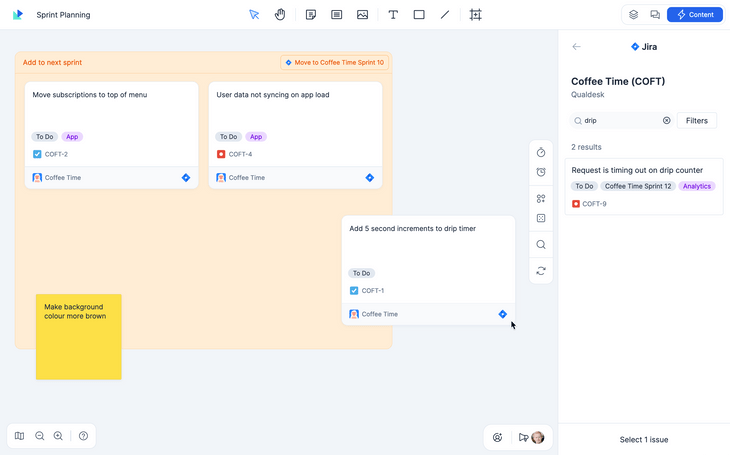Make your sprint planning meeting visual and fast
 Peter ParkesCo-founder
Peter ParkesCo-founder
We’re not agile purists at Qualdesk, but we find a lot of the methodology super helpful. It allows us to stay focused on user needs and gives us a framework for iteration.
We do our sprint planning visually, and this brings three distinct benefits:
1 You get a better plan
It’s incredibly difficult to make sense of user stories, bugs and other tasks if they’re in columns on a board, or in a backlog list.
Whether it’s on a whiteboard online or a physical wall, a 2D canvas gives you and your team an opportunity to zoom out, quite literally, and get a sense of the totality of your plan. Is it the right size? Have we missed anything?

The freedom to move things around, create visual groups and clusters, and to experiment with a number of different hypothetical plans during the meeting, dramatically improves the quality of plan you ultimately commit to.
2 You get a less boring sprint planning meeting
No more death-by-screenshare. Much as I’m sure you love watching someone scroll through Jira – or doing the scrolling yourself – there’s a simple way to make sprint planning meetings more engaging and interactive:
Give everyone a cursor.
This is easy to do in the office, where everyone gets to use the board, but in the world of remote work or hybrid work, you need a digital whiteboard that lets everyone work with your tickets during the sprint planning meeting on an equal footing.
3 You have more time to spend on getting real work done
This last one is self-explanatory. If you can get to an agreement more quickly, and don’t have to spend time writing up the sprint afterwards, everyone gets more time to spend on value-generating work.
That goes for product managers, agile coaches / scrum masters, and the engineers and designers on the team.
Where does Qualdesk fit into all of this?
- You can grab your tickets from Jira, issues from Linear or cards from Trello and drop them directly onto a realtime digital whiteboard. It only takes a minute or two to get set up before the sprint planning meeting.
- You can run your sprint planning session visually in true multiplayer: live cursors and live typing. Plus, you might also get confetti 🎉.
- You can add annotations and new ideas, images from Figma and screenshots to help make good decisions about what to include in the next sprint.
- Once everyone’s agreed, you can add items to the next sprint with a couple of clicks: no need to write up afterwards.